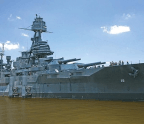

Ironically, just months earlier John Nott, the defence secretary, had listed these two carriers, along-with the amphibious assault ships HMS Fearless and HMS Intrepid, for withdrawal from the fleet as part of government cost-cutting plans drawn up in the 1981 review. In February 1982, the Australian government had agreed to buy HMS Invincible for £175 million. Now having escaped being sold or sent to the scrapyard, these warships were being prepared for war. The military, in particular the Navy, were quietly furious with Nott and his planned cuts, the fleet was now fighting for its future. On the day the Argentines invaded, the Admiral’s office had sent a warning order to the fleet raising their readiness for operations. Later in the day, after a subdued meeting in Downing Street, Admiral Leach ordered a further signal to be sent it was clear and direct, it said: ‘The task force is to be made ready and sailed.’
As daylight dawned on 2 April 1982, the triumphant Argentine force celebrated in and around Port Stanley, they took souvenir pictures of themselves and after they had secured Government House, the airfield and the harbour, Argentine commanders focussed on establishing their force. Troops tore down signs at Stanley airfield and replaced them with ones proclaiming the ‘Malvinas airport’. Air controllers took over the air traffic control centre, command and communications units were located on the airfield and a massive logistics operation commenced to bring in more troops and equipment. Pucara ground attack aircraft flew in, four arriving on the day of the invasion and another eight landing six days later. These Argentine-made aircraft were ideal for the Falklands, their short take-off and landing capability suited the small airfields at Pebble island and Goose Green where some would be based. They carried unguided bombs and 2.75in rocket pods or could be fitted with 7.62 machine guns. The Pucaras, were not fast but they were ideal to support ground forces and provide forward reconnaissance missions. In addition, air force commanders deployed C-130 Hercules transport aircraft to Stanley and a Shorts Sky-van in the aero-medical role. The




